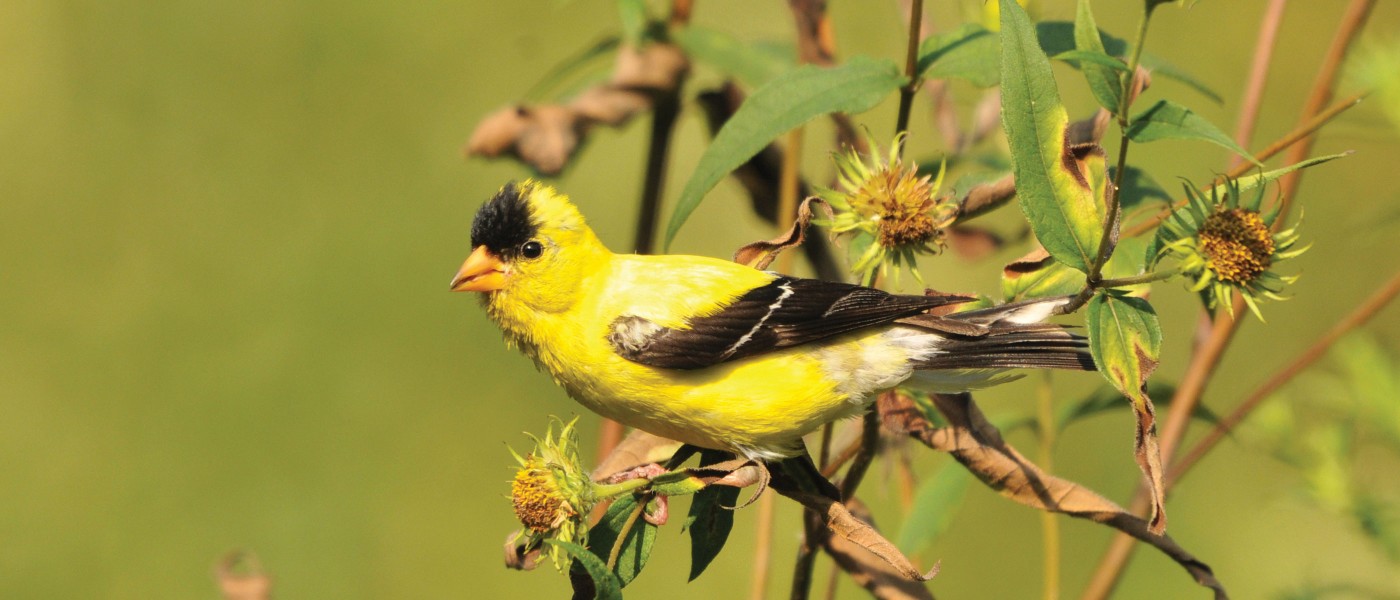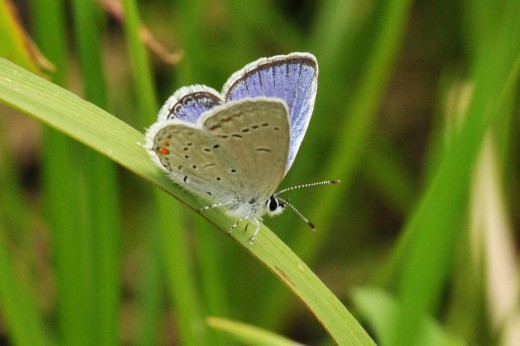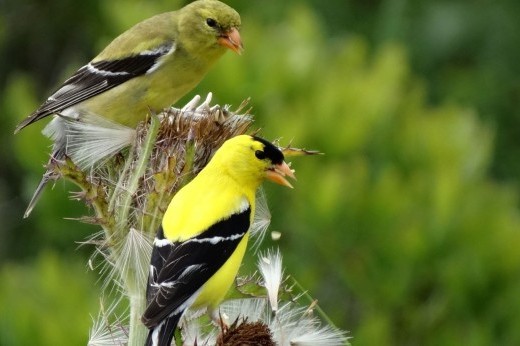When I moved to New York from rural Illinois, the city might have swallowed me up if I hadn’t started to explore the archipelago of parks and gardens spread throughout the five boroughs.
At first, these green spaces were just places to visit when I needed fresh air, but soon I noticed a ritardando when I entered: My pace slowed and I noticed more of what surrounded me.
Much as our urban natural areas provide refuge for us, so they do for the wildlife that has lived on this continent for centuries. We’ve broken up the habitat here into fenced parcels accessible to us by subway, but there is still a wonderful variety of landscapes, from the rocky forests of Van Cortlandt Park in the Bronx to the wetland surrounding the Salt Marsh Nature Center in Marine Park, Brooklyn.
I am fortunate to live so close to Brooklyn Botanic Garden that I can consider it my own backyard. In addition to being a diverse collection of native and exotic flora, it is also habitat for a correspondingly wide range of creatures, big and small, in search of food and shelter. It’s also a place for humans to learn how the plant and animal kingdoms relate to one another.
As the son of a mammalogist and an entomologist, I was fortunate to start learning about biology from an early age. Even though I grew up to be a software developer, I can trace my passion for the city’s green spaces to that background. By closely observing and photographing the plants and animals I see as I walk along, I am really able tune into the wilderness right here in the city.
The Garden at opening time is a special place. The morning is fresh, the light is changing, and the air is buzzing with activity. When I walk through the Flatbush Avenue entrance and leave the hustle of Empire and Ocean Boulevards behind, immediately and unconsciously my footsteps slow, my breathing deepens, and my ears tune in to the quieter environment. Often, the first thing I do is glance up at the New York City Fire Department communications tower on Washington Avenue to see if there’s a peregrine perched there, surveying the Garden for prey. I also start to listen for birds closer to the ground.
Dozens of migratory and resident bird species can be found here throughout the year, from the ever-present house sparrows and robins to fleeting beauties like scarlet tanagers and golden-crowned kinglets. In the Discovery Garden recently, I even thought I heard a gull in a cedar tree. But I knew they never call from trees, and sure enough, at the very top I saw a mockingbird, gray, black, and white, changing his song every few seconds.
Continuing along the east path, past the Children’s Garden, I pass the butterfly bushes that stand in the corner. In the summer, they are swarming with swallowtail butterflies and grass skippers. The plant isn’t native, but it’s an attractive ornamental and a plentiful source of food for these insects.
The newly opened Shelby White and Leon Levy Water Garden, with its riparian plants, clear pond, and muddy shore, is already attracting wildlife. This winter, a population of mallards quickly took up residence, and I’m guessing that the waders and shorebirds that were here in the fall will return to feed this year. I’m still hoping to spot a heron here— crayfish appreciate the fresh water and muddy slopes, and herons appreciate crayfish. They are frequent visitors to the Japanese Hill-and- Pond Garden and Lily Pool Terrace, so it’s just a matter of time.
Beyond the pond is an open, grassy area popular with the northern flicker, one of the most beautifully colored and patterned birds in the region. I usually see a few of them foraging for ants on the ground—unusual among woodpeckers but common for flickers.
They do drill into wood to create cavities for nests, though, and there’s a nest hole in an old white pine tree in the Native Flora Garden that’s probably home for a flicker and its mate. Next, I like to make my way toward the Monocot Border, a swoop of showy plants in the Plant Family Collection. In the air, straight overhead, green darners and blue dashers can be seen darting across the sky as they hunt smaller insects. Many dragonflies are more likely to be seen near water, but I find these two species everywhere. Above them, chimney swifts circle ceaselessly, chattering while they, too, hunt insects.
Onward, through Bluebell Wood toward the Rose Arc Pool, I come to a tall tuft of fennel, covered in summer with fragrant yellow flowers. Bees, wasps, and flies love this plant, and I often study and photograph them here. Sometimes there are hundreds of insects feeding on its nectar and spreading pollen. They are so engrossed in their task that I can get close enough to photograph the huge and intimidating cicada-killer wasps.
As the morning sun starts to get hot, I like to head toward the tall-grass meadow and sandy barrens of the Native Flora Garden expansion. Here I sometimes hear the quick chirping of a goldfinch before I see it at the top of a bulrush, picking at seeds. Along the west fork of the path, I can walk through a small sea of green splashed with orange and yellow blooms that reminds me of home.
The yellow flowers are partridge pea, particularly popular with thread-waisted mud daubers. The orange flowers are butterfly milkweed, which attracts monarchs in the summer. They lay their eggs exclusively on milkweed plants, which the caterpillars will then feed on, making them mildly toxic to predators. In the spring, before it flowers, leafcutter bees bite into its foliage, leaving neat round holes.
Plenty of dragonflies are busy over the pond here, too, but I often like to head into the older, wooded section of the Native Flora Garden, where carpenter bees, huge and shining black, hover and dash to defend their territory. They can be found feeding on pollen and nectar at many kinds of plants, but they make their home by burrowing into wood. The railings here are particularly attractive real estate, and you can find the entrances to their nests along the undersides.
More: Read All About Bugs: An Introduction to Butterflies at BBG
The jewelweed and cardinal flower in this part of the garden also attract hummingbirds in the summer. These plants provide abundant nectar for the energy-intensive lifestyle of these birds, which in turn serve as pollinators. In fact, the cardinal flower’s inflorescence is specifically adapted to be pollinated solely by hummingbirds.
I usually walk eastward from here, past the lilacs, listening for blue jays and robins, and past the Cranford Rose Garden, where mockingbirds stake out their domain on tall posts laced with clematis. I then head toward the Japanese Hilland- Pond Garden in search of egrets. They’ll show up any time of year when the pond hasn’t frozen over, hunting from dawn until dusk. One of my most memorable egret sightings happened along the south side of the Japanese Garden pond. Just as the torii came into view, there it was: graceful and statuesque, white against vermilion.
I could have watched that egret for hours as he walked slowly along the pond, hunting koi. I managed to photograph him just as he started to take off. Warblers are also here, and I often see a yellowthroat or blackand- white warbler hiding in the wisteria. In the evenings, long-jawed orb weaver spiders will drape huge webs across the lower waterfall. I’ve sometimes arrived early enough to photograph one still intact, but by later in the day they are tattered and vacant.
I notice something new every time I visit the Garden—a new bird call, another species of dragonfly, a feeding behavior I hadn’t seen before, or the fact that butterflies are showing up earlier in the year than I had remembered. With the rich habitats here, the diversity of wildlife is equally rich. As I step back onto the sidewalk and into the city, I start to tune out again, but the connection I made to nature will nourish me through the rest of the day.



